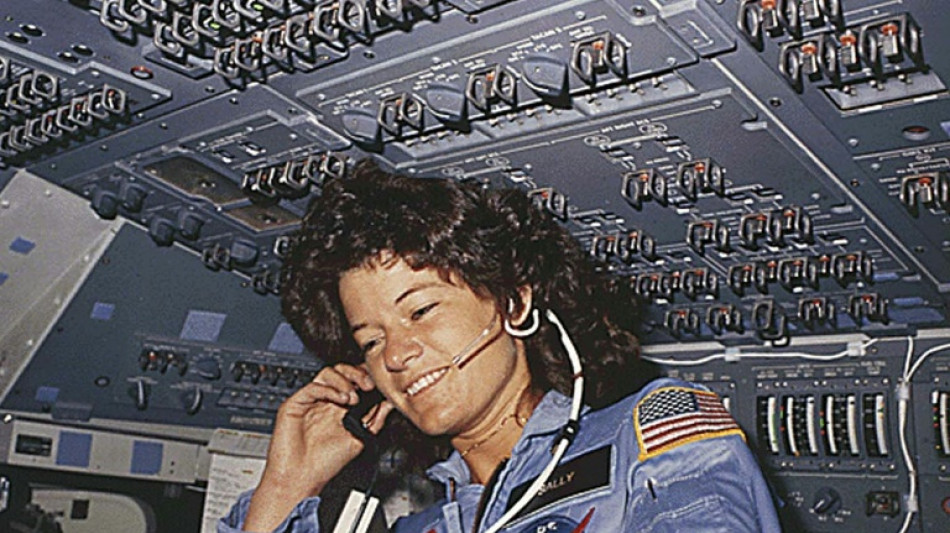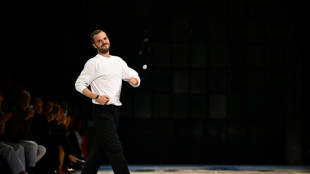

Queer astronaut documentary takes on new meaning in Trump's US
When director Cristina Costantini started making a documentary about the first US woman in space, she thought it would be looking back on the "sexism and homophobia of yesteryear".
But the story of astronaut Sally Ride, whose queer identity was a secret when she blasted off more than four decades ago, took on a "completely different meaning" after the re-election of President Donald Trump, Costantini told AFP.
"When we started making the film, it didn't seem all that political to celebrate queer love or women astronauts," said the director of "Sally", which started streaming on Disney+ in many countries on Tuesday.
"Just a few years ago, there was a pride flag that flew in space, and (NASA) had vowed the next person on the Moon would be a woman."
But that vow has now been removed from NASA's website, just one of many changes at the US space agency since Trump returned to the White House in January.
"Employees have been asked to remove symbols of gay pride, pride flags, trans visibility flags," Costantini said.
Now, the director hopes the documentary "serves as a reminder that these rights are not guaranteed, that they were hard fought and they were won by people like Sally" and her partner Tam.
"It's our responsibility to carry the torch and continue the fight for equality."
- 'It was hard on her' -
After boarding the Challenger space shuttle on June 18, 1983, Ride became the first US woman to fly to space. It was two decades after Soviet cosmonaut Valentina Tereshkova made the voyage.
NASA only started allowing women to apply as astronaut recruits in 1977.
Ride, who had a PhD in astrophysics from Stanford University and was an accomplished tennis player, was one of six women selected out of more than 8,000 applicants in the class of 1978.
Ride received the same training as male astronauts, but was treated quite differently.
Journalists asked whether she cried when facing difficulty. NASA engineers asked about what make-up she would need in space. They even worried whether 100 tampons would be enough for her six-day journey into space.
"I felt the women hadn't paid their dues like we had," Mike Mullane, another astronaut in the class of 1978, said in the documentary.
When Ride returned to Earth, the image of the 32-year-old in her blue jumpsuit, curly chestnut hair, piercing blue eyes and confident smile was seen around the world.
But Ride struggled to come to terms with her new status as icon.
"It was too much for her," Tam O'Shaughnessy, who was Ride's partner for 27 years, told AFP. "She was an introvert and it was hard on her."
The two women founded a nonprofit dedicated to teaching girls science.
But the world would only learn they were in a relationship until after Ride's death from pancreatic cancer at the age of 61 in 2012.
"Sally did not like labels," O'Shaughnessy said.
"She was a queer woman. And so I think it's great that she's sort of become a part of the (LGBTQ+) community after death."
O'Shaughnessy expressed concern at reports that US Defense Secretary Pete Hegseth wants to change the name of a Navy ship currently named after famous gay activist Harvey Milk.
"There's a research vessel called 'Sally Ride' and it crossed my mind that might change, too" she said.
"It's just shocking. All of this is hard to swallow."
A.Sauer--BVZ



